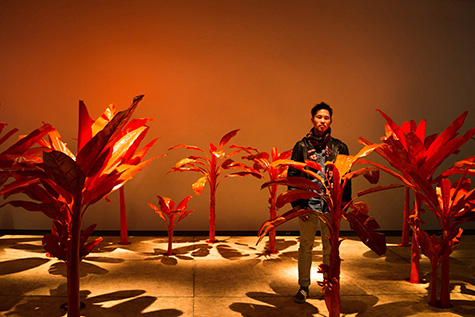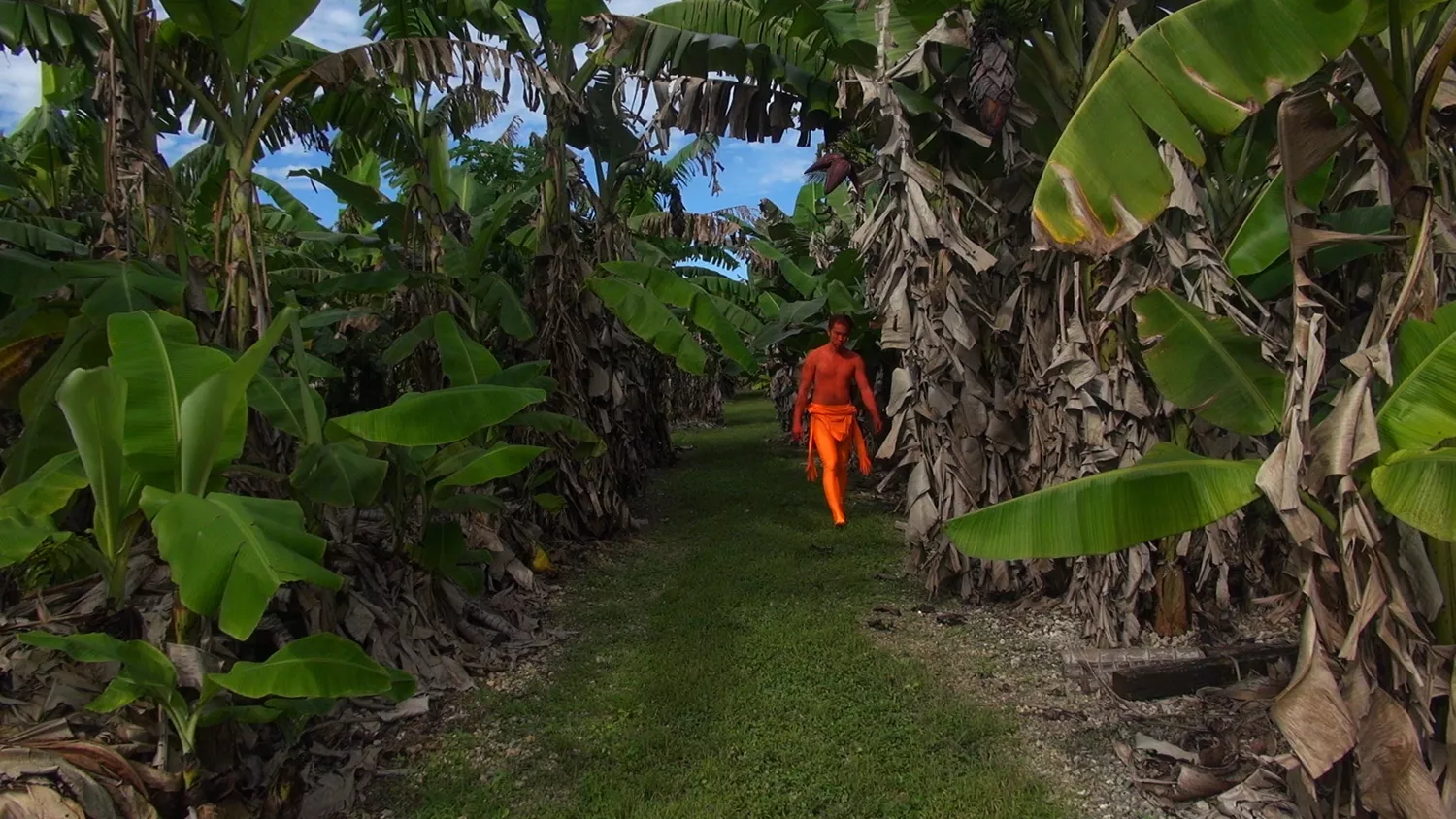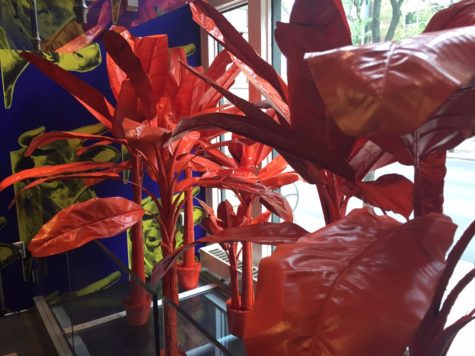ExposuresHanging Fruit

Zhiwan Cheung, The Impossibility of Home, installation, 2016, courtesy of the artist
Zhiwan Cheung’s installation Exposures: Hanging Fruit is on view in The Warhol Store’s street-facing windows through August 14, 2016. Join Cheung and The Warhol’s Associate Curator of Art Jessica Beck in an artist talk Saturday, May 14, 2016, at 2 p.m. in The Warhol theater.
Andy Warhol’s banana print, immortalized by the Velvet Underground’s debut album cover, has been following me for quite some time in many guises. The “banana” is a vernacular label for Asian Americans—yellow on the outside and white on the inside—that describes those who either disguise their identity willfully or have fully assimilated to the mainstream culture. Of course, this phenomenon of using food as labels crosses many cultures and their use is usually pejorative: Asians as bananas or Twinkies, Native Americans as apples, African-Americans as Oreos, and coconuts as a catchall for any skin color that is a shade of brown. These labels are inherently accusatory, conveying the perception of racial betrayal, of not being true to one’s roots or race, of trying to “pass.”

Large banana paintings developed from this notion of the banana as a label linked to my ethnicity. Much like the ostensibly harmless food words, my paintings were innocuous studies of fruit—archetypal still-lifes. My use of the banana image coincided with my discovery of Chinatown Orange. This color, also known as 50YR 18/650, found in home improvement stores and sold by Glidden Paints, reveals the complexities and contradictions of naming. Has Chinatown ever been orange? Has orange ever been Chinatown? The absurdity of assigning a color to an ethnic neighborhood matches the inanity of calling a person by the name of a fruit.
I eventually shifted away from the banana as my central image as I could only paint it for so long—I did not want to become known as the banana painter. Furthermore, the banana seemed already exhausted in contemporary art. Andy Warhol’s banana print, now an iconic image, proved to be a stubborn precedent to compete with. While I moved beyond the banana as a subject, Chinatown Orange remained, partially for the abstract nature of the color. As a bewildering signifier of an ethnic neighborhood, the color could be applied with greater range and implications. Chinatown Orange is language as image, nonrepresentational, and creates an open-ended reflection of society. The interchangeability and arbitrary nature of the word can relate to all language. Little did I realize that the banana would return, albeit in a different form.

For this installation, Hanging Fruit, I painted artificial banana trees Chinatown Orange. Tightly packed between the frames of the The Warhol Store’s windows, the orange banana trees operate as a conduit to highlight and subvert their own illogically provocative name as I reclaim the color through an equally absurd implementation. The modern banana trees, domesticated for commercial production, are lab-grown plants that produce seedless fruit. The changed fruit has become useless for production but valuable for consumption. Estranged from its original context, the banana tree is transformed, much like the word “banana” as a pejorative word and “Chinatown Orange” as a harmless signifier for a color. Brought into the context of The Warhol, a commercial juxtaposition emerges, from the mass-produced paint colors to the Walmart-bought banana trees. Hanging above, around, and within the installation, like specters of the past, are the various incarnations of Warhol’s banana, the very bananas I sought to avoid. The total installation seeks to create a unique experience that blends awe and alienation.
I would like to thank everyone at The Warhol and its staff. I would also like to thank Jessica Beck for her continued and generous support in my work and Eric Shiner for offering me the opportunity to engage with Warhol’s legacy. Lastly, I want to thank everyone at Carnegie Mellon School of Art staff, faculty, and fellow grads.